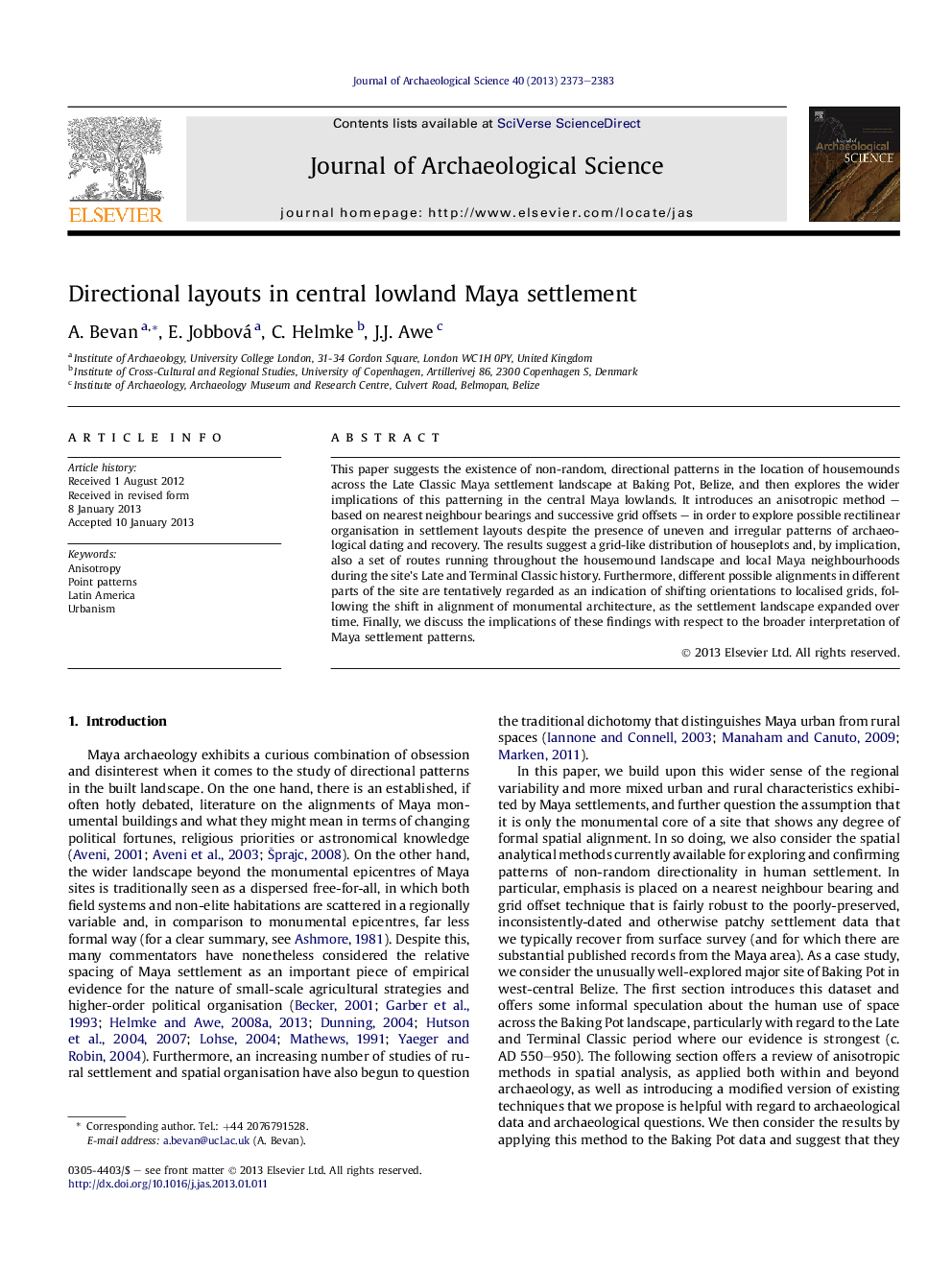| Article ID | Journal | Published Year | Pages | File Type |
|---|---|---|---|---|
| 1035552 | Journal of Archaeological Science | 2013 | 11 Pages |
This paper suggests the existence of non-random, directional patterns in the location of housemounds across the Late Classic Maya settlement landscape at Baking Pot, Belize, and then explores the wider implications of this patterning in the central Maya lowlands. It introduces an anisotropic method – based on nearest neighbour bearings and successive grid offsets – in order to explore possible rectilinear organisation in settlement layouts despite the presence of uneven and irregular patterns of archaeological dating and recovery. The results suggest a grid-like distribution of houseplots and, by implication, also a set of routes running throughout the housemound landscape and local Maya neighbourhoods during the site's Late and Terminal Classic history. Furthermore, different possible alignments in different parts of the site are tentatively regarded as an indication of shifting orientations to localised grids, following the shift in alignment of monumental architecture, as the settlement landscape expanded over time. Finally, we discuss the implications of these findings with respect to the broader interpretation of Maya settlement patterns.
► First full-scale spatial analysis of settlement across an entire Maya lowland polity. ► Nearest neighbour bearings identify rectilinear patterns of Maya settlement. ► Alignments of housemounds appear to change as the polity expanded over time. ► Detailed discussion of the wider implications for wider Maya settlement archaeology.
